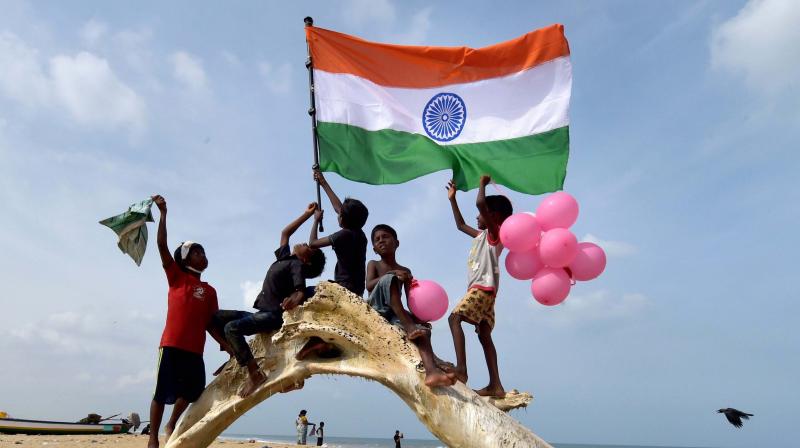Independence Day: 11 things about I-Day you probably did not know

India gained independence from the British Raj after 200 years of colonial rule. On 15 August 1947, the UK Parliament passed the Indian Independence Act 1947 transferring legislative sovereignty to the Indian Constituent Assembly.
And Jawaharlal Nehru, the first Prime Minister of independent India, delivered his famous "Tryst with Destiny" speech in The Parliament, on the eve of India's Independence, towards midnight on 15 August 1947. But while we read a lot about our struggle towards Independence there are still more that remain to be known.
We list 11 such facts about our Independence Day that you probably did not know about.
Independence before Independence Day: At the 1929 Lahore session of the Indian National Congress, the Purna Swaraj declaration, or "Declaration of the Independence of India" was promulgated, and 26 January was declared as Independence Day
Indian national flag: The Indian national flag initially comprised of just two colours, saffron and green. It was Mahatma Gandhi who gave the idea of introducing the Ashoka Chakra on it. According to him, the wheel would symbolise progress. Saffron signifies courage and sacrifice whereas green represents faith and chivalry. The version that is prevalent today was made by Pingali Venkayya at Bezwada in 1921. In fact the authority of making and supplying national flag only rests with Khadi Development and village industries.
No national anthem on first Independence Day: Interestingly, the first Independence Day was celebrated without any national anthem and did not have Mahatma Gandhi participating as well. While Gandhi was away, busy protesting Hindu-Muslim riots, Rabindranath Tagore’s Jana Gana Mana written in 1911 was adopted as the country’s national anthem only in 1950.
Reason Pakistan celebrates their independence a day earlier: History says that Lord Mountbatten was pressurised into being a part of Independence Day ceremonies for both India and Pakistan. That is the reason Pakistan brought forward the date of their Independence Day to August 14.
Reason 15th August chosen as Independence Day: Lord Mountbatten had been given a mandate by the British parliament to transfer the power by June 30, 1948. Based on Mountbatten’s inputs the Indian Independence Bill was introduced in the British House of Commons on July 4, 1947 and passed within a fortnight. It provided for the end of the British rule in India, on August 15, 1947. Mountbatten later claimed that the date came out of the blue in reply to a question. He was determined to show that he was master of the whole event and chose the date because it was the second anniversary of Japan’s surrender.”
Countries that share their Independence Day date with India: Liechtenstein, Republic of Congo and South Korea.
Goa remained a part of Portugal even when India was independent: At the time of independence, Goa was in fact a Portuguese state. It was not before 1961, that the state became a part of Indian union, in the year 1961.
There were 560 princely that joined India when it became independent: Once India got independence, Indian union was joined by more than 560 princely states. Last state that joined the Indian union was Hyderabad.
Our first Prime Minister Jawaharlal Nehru was a style icon: It is good to know that the first prime minister of India was indeed ‘a fashion icon’ and was even featured in a famous magazine- Vogue.
British lawyer was the one who drew the border between India and Pakistan: Sir Cyrill Radcliffe- a famous British lawyer was the one to draw the border between India and Pakistan.
Sikkim joined India much later: In 1975, Sikkim became the final and 22nd state to join the Indian union. Before that, Sikkim was an Indian protectorate.

